We’ve all seen it right, the winged statue perched jauntily above a fountain in Piccadilly Circus… but what is the Eros statue? Why is it there? Turns out there’s a lot more that first meets the eye.
15 Things You Never Knew about the Eros Statue
First of All, It’s Not Actually a Statue of Eros
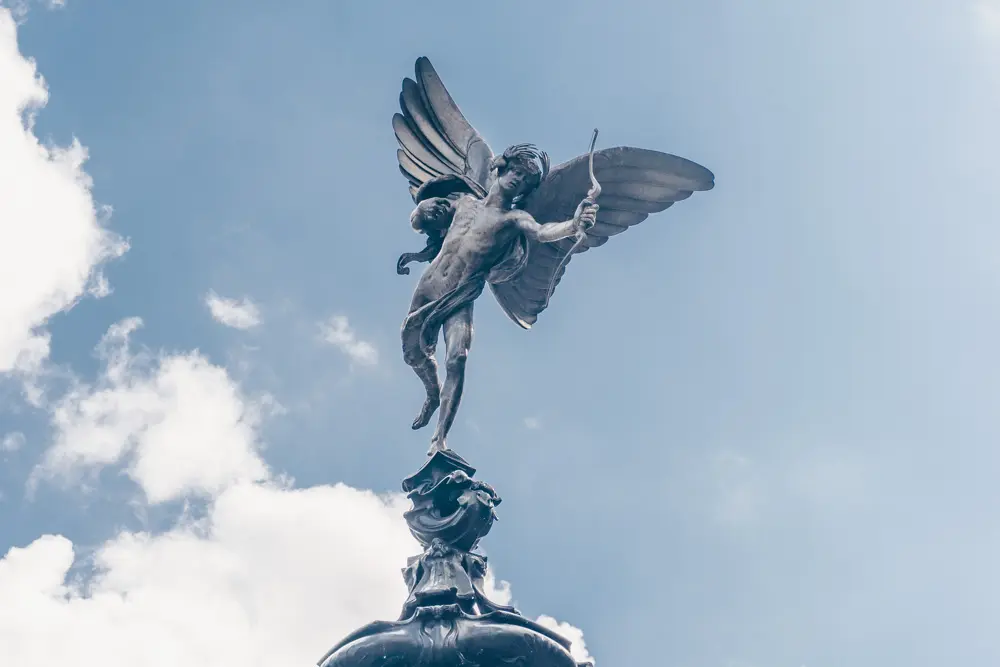
That’s right – even its common name is wrong. The statue is not that of Eros, the god of erotic love, it’s actually a statue of his sibling Anteros – the god of selfless love.
The statue – full name The Shaftesbury Memorial Fountain – was created in 1892-1893 to commemorate the works of Anthony Ashley Cooper, 7th Earl of Shaftesbury, a philanthropist who worked at abolishing child labour and ensuring children were educated in its stead.
That’s not where Lord Shaftesbury’s good deeds ended either. He worked to improve care for the mentally ill and to stop the opium trade. In fact, he was held in such high esteem that he was offered a state burial in Westminster Abbey prior to his death, an offer he declined.
When he did die, it was decided that a memorial should be built to commemorate his works and that Alfred Gilbert was the best artist to create it.
Gilbert described Anteros as the god of “reflective and mature love, as opposed to Eros or Cupid, the frivolous tyrant”. Harsh but fair.
It Stands on Shaftesbury Avenue, Which is Also Named After the Earl
The statue sits on Piccadilly Circus, at one end of Shaftesbury Avenue, which was also named after the Earl.
It’s One of London’s Most Famous Sculptures
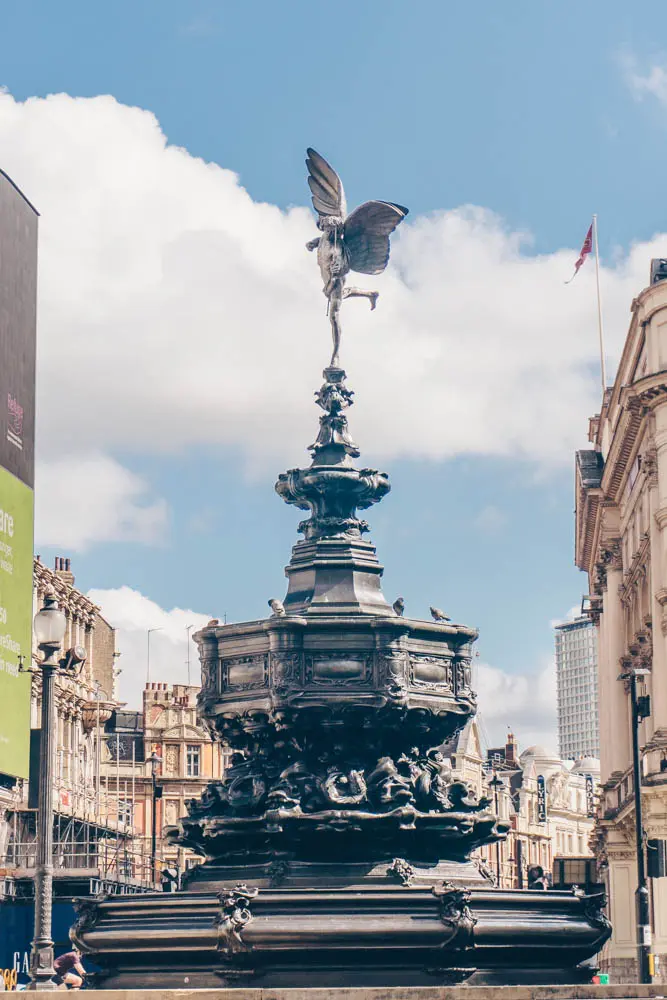
You might not have paid that much attention to it as you’ve pushed your way through the throngs at Piccadilly Circus but the Eros Statue is actually one of London’s best-known.
Not only is it set on Piccadilly Circus, itself an iconic London landmark, but it’s also represented on the masthead of the London newspaper the Evening Standard.
Along with the Eros statue in London, there are also replicas in Liverpool, Blackpool and the Adelaide Art Gallery in Australia.
There was a Fair Bit of Controversy About the Statue When it was Unveiled
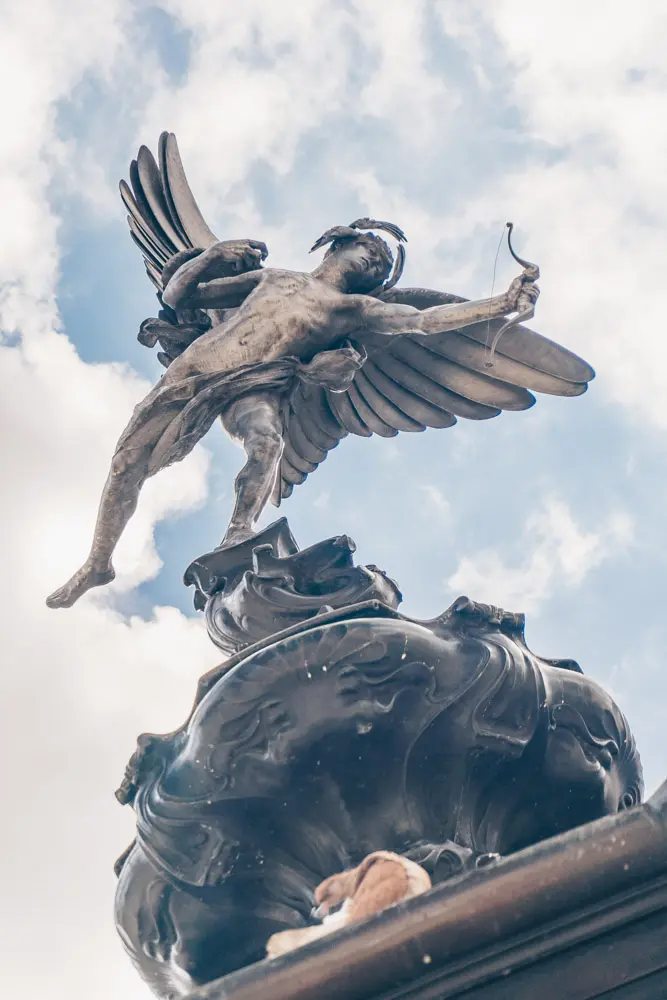
Many people thought that its location in a seedier part of town and the fact that it’s of a nude boy were unfitting to commemorate the worthy Earl.
Other people thought the nude statue was a rather tongue-in-cheek nod to the naughty side of surrounding areas like Soho.
The Fountain Broke New Ground
Ok, so not literally. Although on second thoughts they probably did have to literally break ground in order to build it, but that’s besides the point. What we mean is that the Eros statue was ground-breaking in the materials it used.
That’s because it was built of aluminium, a material that was very uncommon for use in this kind of thing back in 1892 when the statue was built.
It’s only the representation of Anteros that is made of aluminium. The base is made of bronze which would have been a very traditional material for sculpture of its time.
And the Design Was Flawed
Particularly because the base was too narrow, so the water splashed everywhere and made the ground around it very muddy.
It was also designed with cups chained to the base for people to drink out of. The cups were nicked pretty quickly after it was unveiled.
There are a Number of Theories about The Meaning of the Missing Arrow
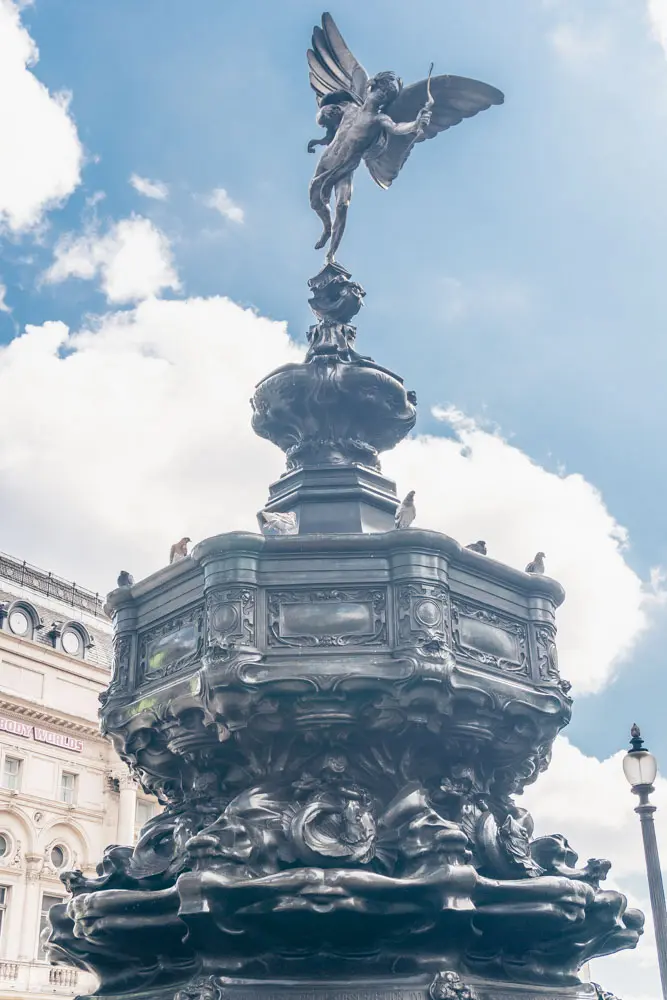
Look closely at the statue and you’ll see that Anteros is readying himself to pull a missing arrow – but what does it all mean?
One theory is that the missing shaft has been buried on the road before him – in other words a play on Shaftesbury Avenue which lies directly ahead.
Another is that it points to the Earl’s family home in Wimborne St Giles.
Neither are true – the statue has been moved but in its original position it pointed in a completely different direction, not down Shaftesbury Avenue or towards Wimborne St Giles but down Lower Regent Street.
Gilbert Lost Money Making the Statue
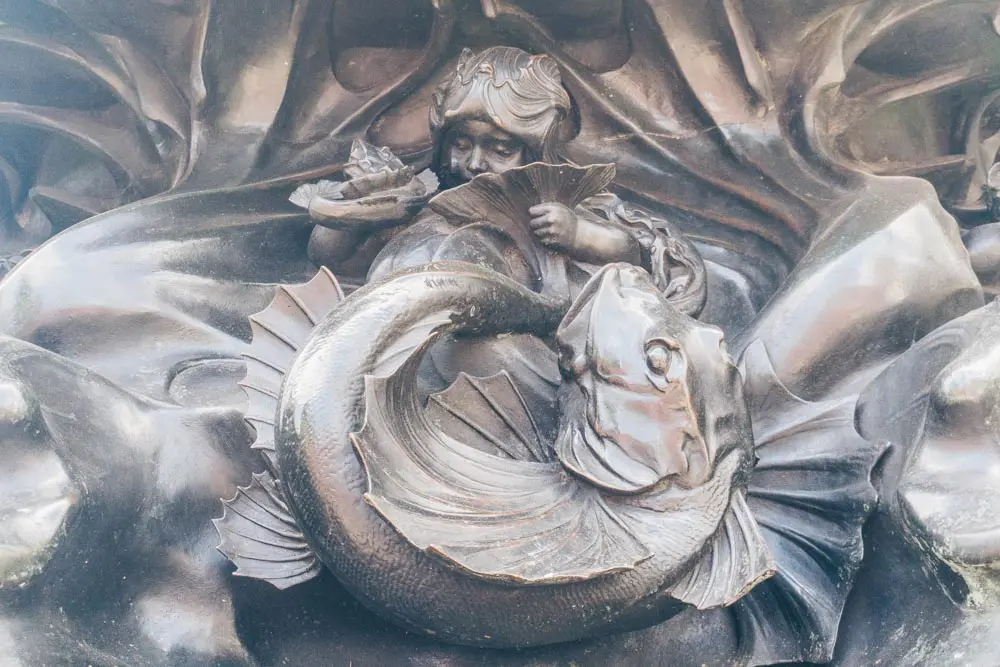
He was paid £3,000 for the work but it actually cost him £7,000 to produce, largely because of the expensive base.
The expense left him heavily in debt and, after several years, he had to flee England and his debtors, resulting in a 25 year stint living in Belgium.
Its Full Name is The Angel of Christian Charity
A name which never stuck, which is why we still know it as the Eros Statue today.
It’s Been Shuffled Around Like a Jack in the Box
The statue has been removed several times throughout history. It was moved in 1922 when the new Piccadilly Circus station was built (before the new station, the booking hall had been overground) – and again in 1939 for the Second World War and in the 1980s and 1990s for restoration.
It Used to Sit Closer to the Centre of Piccadilly Circus
After it was moved in the 1920s for the construction of the new station, the statue was actually repositioned on a new base away from the centre of the circus on its return.
It Was Modelled on a Real Person
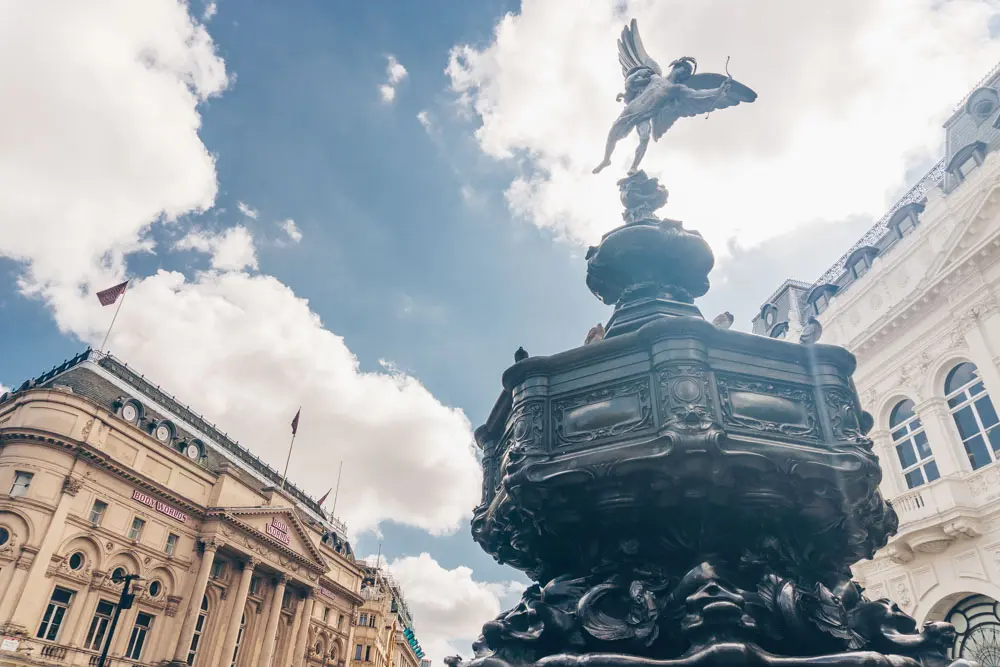
Gilbert’s studio assistant – a 16 year old Anglo Italian called Angelo Colarossi.
It wasn’t Angelo’s only appearance in Victorian art either – he appeared with his father in Frederick, Lord Leighton’s famous piece And the Sea Gave Up the Dead Which Were in It.
The Statue Was the First Cast Aluminium Statue in the World
I feel like I should be excited by this knowledge, but I’m not.
On second thoughts, aluminium’s lightweight nature meant the statue could perch at the jaunty angle we know so well (it would have been impossible in bronze, which is much heavier), so there’s that.
It Was Once Made in to a Snowglobe
Back in 2013 the Christmas celebrations around Piccadilly Circus saw the statue turned into the centrepiece of a giant snow globe.
A giant plastic bubble was put over the top of it and the space inside filled with fans and fake snow. It was quite a sight to behold, but would have been a nightmare to try and shake.
There’s More than One Copy of the Eros Statue
Though this statue was a groundbreaker, it’s not the only one out there. Of course there are probably untold numbers of representations of Eros, but that’s not what we’re about. We mean that there are actually three exact or near-exact copies of the Eros statue around the world.
There is one in Liverpool that is unfortunately now in storage but did stand pride of place in Sefton Park for a good many decades.
Blackpool has one too, or rather Fleetwood, a small town near Blackpool. Unfortunately that one isn’t in the best nic either.
The final eros statue is all the way down under, in the Art Gallery of South Australia. It was commissioned in 1992 and is holding up rather well.
The Eros Statue: Practical Information and Tips
- You can visit the statue at any time. There’s no gate or anything, it’s public art in the truest sense. Just turn up and have a look – you can’t miss it.
- Expect crowds at the weekend and even some street performers. There’s usually something going on in the pavement space in front of the statue.
- If you’re coming out of Piccadilly Tube Station you can follow signs in the station to pop up out of the exit that’s right near the statue.
